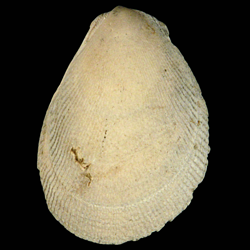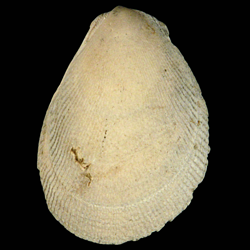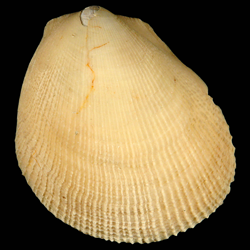
Limidae

Overview
Common name: Flame scallops and file clams
Key morphological features: The Limidae range in size up to ~200mm. The shells are equivalve, compressed, and range in outline shape from oval to trigonal. They have permanent gapes on the dorsoanterior portion of the shell and sometimes on the posterior as well. The shell is composed of a combination of calcite and aragonite and its exterior exhibits radial ribs, occasionally in a divaricating pattern. Valve interiors have a simple, uninterrupted pallial line and interior shell margins are smooth or denticulated depending on exterior sculpture. Species of Limidae are monomyarian, and the hinge is edentate (lacking teeth). Source: Mikkelsen, P.M., and Bieler, R. 2008. Seashells of Southern Florida: Bivalves. Princeton, New Jersey: Princeton University Press. 503 pp.
Geological range: Carboniferous to Recent (Mikkelsen & Bieler, 2008).
Geographic distribution: A distributional map for modern Limidae may be accessed from OBIS. A distributional map for ancient Limidae may be accessed from the Paleobiology Database.
Diversity: There are 206 recognized living species of Limidae and 9 genera (WoRMS database, unvetted). The Paleobiology Database recognizes 30 fossil genera and 664 fossil species of Limidae (unvetted).
Paleoecology: The Limidae are mobile, marine, filter-feeding bivalves. They live byssally attached or nestled in hard substrates, such as reefs, or seagrass, but are capable of swimming by rapidly opening and closing their valves. Extant Limidae have many long sensory tentacles that extend out of the shell and are often brightly colored. They are distributed worldwide and inhabit a range of environments from estuaries to the deep sea. Source: Mikkelsen and Bieler (2008).
Phylogenetic status: Monophyletic. The recent molecular phylogenetic analysis by Harasewych and Tёmkin (2015) supports the monophyly of Family Limidae.

